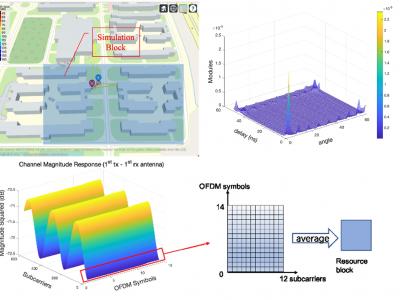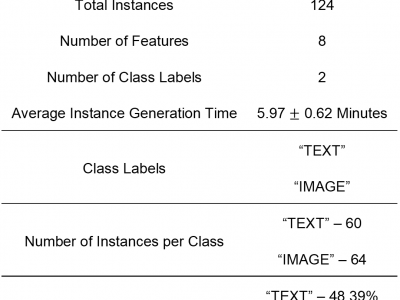Artificial Intelligence

dataset for paper "CBIE: A Joint Continual Learning Neural Network for Biomedical Information Extraction"
- Categories:
 71 Views
71 ViewsDistributed Denial of Service (DDoS) attacks first appeared in the mid-1990s, as attacks stopping legitimate users from accessing specific services available on the Internet. A DDoS attack attempts to exhaust the resources of the victim to crash or suspend its services. Time series modeling will help system administrators for better planning of resource allocation to defend against DDoS attacks. Different Time Series analysis techniques are applied to detect the DDoS attacks.
- Categories:
 6196 Views
6196 ViewsThis dataset is a collection of images and their respective labels containing multiple Indian coins of different denominations and their variations. The dataset only contains images of one side of each coin (Tail side) which contains the denomination value.
The samples were collected with the help of a mobile phone while the coins were placed on top of a white sheet of A4-sized paper.
- Categories:
 3361 Views
3361 ViewsThis is the example dataset and source code of the paper "A Generalized Channel Dataset Generator for 5G New Radio Systems Based on Ray-Tracing" , and the data generator can be downloaded for free by researchers.
The datagenerator_raytrace3.0 is now support for mm-wave (28GHz+) channel state information.
The advantages of our dataset are as follows:
-
To deal with the large-scale dataset requirements, this letter models the channel according to 5G NR stan- dard published by 3GPP, and provides a 5G NR channel datasets generator based on CDL channel model.
- Categories:
 1315 Views
1315 ViewsIn this paper, we consider unmanned aerial vehicles (UAVs) equipped with a visible light communication (VLC) access point and coordinated multipoint (CoMP) capability that allows users to connect to more than one UAV. UAVs can move in 3-dimensional (3D) at a constant acceleration, where a central server is responsible for synchronization and cooperation among UAVs. The effect of accelerated motion in UAV is necessary to be considered. We define the data rate for each user type, CoMP, and non-CoMP.
- Categories:
 685 Views
685 Views
MNIST
- Categories:
 161 Views
161 ViewsHuman intention is an internal, mental characterization for acquiring desired information. From
interactive interfaces, containing either textual or graphical information, intention to perceive desired
information is subjective and strongly connected with eye gaze. In this work, we determine such intention by
analyzing real-time eye gaze data with a low-cost regular webcam. We extracted unique features (e.g.,
Fixation Count, Eye Movement Ratio) from the eye gaze data of 31 participants to generate the dataset
- Categories:
 634 Views
634 Views






